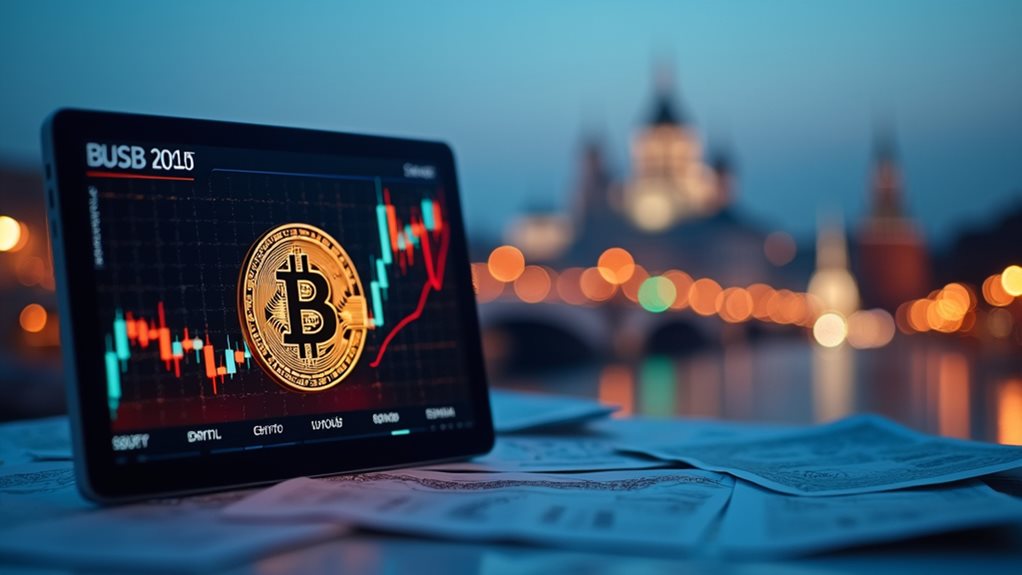Sberbank just launched Russia’s first Bitcoin-linked bond, letting qualified investors bet on crypto without touching a single digital wallet. The bond tracks Bitcoin’s USD performance plus the USD/RUB exchange rate—basically two bets for the price of one. No exchanges, no private keys, no drama. Just traditional bond investing with a cryptocurrency twist. Bank of Russia approved it, signaling the country’s cautious acceptance of digital assets through familiar channels. There’s more brewing beneath this financial surface.

The product targets qualified investors who want crypto exposure without actually, you know, dealing with crypto. No wallets. No exchanges. No late-night panic attacks watching price charts. Just good old-fashioned bond investing with a Bitcoin twist.
Here’s how it works: investors get returns based on Bitcoin’s USD performance plus whatever happens with the USD/RUB exchange rate. It’s like betting on two horses at once. The Bank of Russia signed off on this crypto-traditional finance mashup, which is noteworthy considering Russia’s complicated relationship with digital assets.
The bond trades over-the-counter in rubles, keeping everything nice and domestic. Qualified investors can now dip their toes in crypto waters without leaving Russia’s regulatory sandbox. Smart move, really. Why deal with foreign exchanges when you can get your Bitcoin fix through traditional channels?
Why wrestle with foreign crypto exchanges when you can get your Bitcoin exposure through good old domestic channels instead?
This isn’t just about one bond. Sberbank plans to list future issuances on the Moscow Exchange, opening doors for more investors. They’re also cooking up Bitcoin derivatives because apparently one crypto-linked product wasn’t enough. Bitcoin futures will be available through SberInvest starting June 4, 2025.
The timing feels intentional. Russia’s been working to integrate digital assets into its financial system while maintaining strict control. This bond represents that delicate balance—crypto exposure wrapped in regulatory approval. The EU’s MiCA framework provides a template for other regions seeking regulatory clarity in crypto markets.
Other countries have tried similar approaches, but Russia’s doing it their way. The bond eliminates the complexity of direct crypto ownership while still giving investors skin in the Bitcoin game. No private keys, no hardware wallets, no existential dread about losing access to your digital fortune.
Sberbank’s fundamentally saying: “Want Bitcoin exposure? We’ll handle the messy parts.” The bond marks a clear shift in how Russia views cryptocurrency integration. Traditional finance meets digital assets, Russian-style. With assets valued at $626 billion, Sberbank has the financial foundation to support these ambitious new cryptocurrency initiatives.
Whether this sparks broader adoption or remains a niche product for qualified investors remains to be seen. But one thing’s certain—the lines between crypto and traditional finance just got a lot blurrier in Russia.









